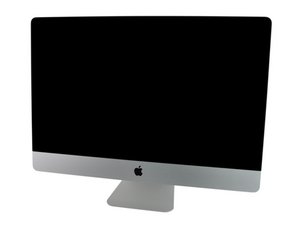iMac Graphics Card slow after repair
I am a 13 year old Mac enthusiast starting my journey into the world of computer repair.
I have a 2011 27” iMac, and I’ve been having some issues with the graphics card being very slow. Here are the specs: i5 (2400) 3.1GHz, 4 Cores - 16 GBs of Timetec RAM (2x8, no Apple RAM), Radeon 6970M 1024MB - 500GB SATA Samsung 860 EVO SSD (TRIM enabled).
Honestly this issue has completely stumped me. It’s very minor, but also very puzzling. So here’s my problem -
(I include a lot of probably unnecessary details, but I did in case any of them can help resolve the issue)
I recently was noticing very slow performance on my iMac that seemed related to the hard drive (it had a 2TB HDD + 60GB SSD Fusion Drive installed from the refurbisher I bought it from). I also found a RAM error when running Apple Hardware Test, so I decided to replace it too (2x8 Crucial, 2x2 Hynix, both seemed to be the right specs, so supposedly faulty). I first removed the Fusion Drive CoreStorage Volume with terminal in recovery mode, and then opened it up. I replaced the HDD with the SATA SSD (with thermal sensor), removed the 60GB (SATA) SSD (It didn’t have any branding) under the optical drive and its SATA cable, and replaced the RAM with the 16GB Timetec RAM (it was also the right specs). I removed the logic board and repasted the CPU. On trying to remove the Airport card cables, I accidentally damaged one of the sockets, but I haven’t noticed any WiFi/Bluetooth issues related to it.
I then put it all back together, went through some no boot issues because I hadn’t seated the RAM right :D, and reinstalled MacOS. I noticed on boot though that the optical drive fan was running super loud, which I later found out was because I probably didn’t plug the thermal sensor back in, as AHT showed an Optical Drive thermal sensor error later, and Intel Power Gadget showed the CPU was quite cool. I setup a temporary user, and then later migrated my users and “other files and folders” (I skipped computer/network settings and apps because I heard they can cause issues), from a Time Machine backup on a network Time Capsule. I ran into some installing issues during the migration, which I resolved by canceling, deleting the users, and starting over again. I also ran first aid on both the backup and the computer drives to try to help resolve the issue. I then reinstalled some of my apps. It seemed to be working great, and much faster than before, besides a couple glitches which is expectable of a 9 year old computer. I then booted up Minecraft, which I play occasionally, too see if it would work.
And this is where I had my problem. Normally, on my default graphical settings, I get around 100 FPS average. I was confused to find that I was only now getting 10-20FPS, 30 at best. I tried several things to try to figure out the source of the problem. I looked into activity monitor, which only showed the next highest CPU user was itself, at around 30% (of 400%). Minecraft showed up to around 350% when loading, which was normal, as it did before the upgrade. After joining a world it showed around 200 - 250% average, which I haven’t actually ever looked at activity monitor while in a world for some reason, so I don’t know if that’s normal for my computer or not. I reset the SMC, NVRAM (PRAM), booted into Safe Mode, and ran AHT. None of these seemed to help. The only results I got from that - on the short and long tests - was the thermal sensor error I mentioned before. This is the point I am at right now.
I also want to include that the total size of the migration has filled up around 300GBs of the 500GB drive.
If I have left out something, which I most likely have, please let me know and I will try to answer as best I can.


 3
3 
 329
329  971
971 